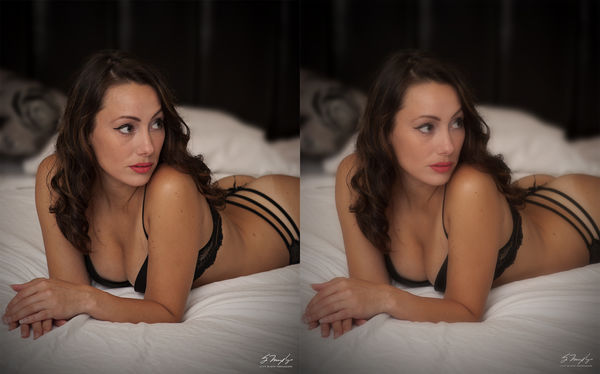How to get "soft" portraits rather than sharply defined?
Feb 21, 2019 15:39:52 #
I have been involved with soft focus portraiture for a very long time.
It is one of the styles and options I offer my clients, something I
may apply to parts of my wedding coverages and a technique I sometimes
crossover into some of my commercial work as well.
I am not one to set stringent "rules" in photographic techniques or
start off any of my posts with an adversarial tone or an argument,
however, there are many misconceptions, folklore and old wives tales
about this style of work. There are a few specialized prime lenses, a
few filters and a hand full of improvised methods that work
successfully in that order, that is, prime lenses are the best tools
for the job, certain filters are the next runners up and some of the
improvised methods may work but many are debatable and just don't make
the grade.
As you can see, right here on the UHH site and many other forums,
folks are always after the best lenses for certain jobs. There are
many opinions and debates but at the end of the day, the consensus is
usually that there are certain lenses that are suited to specialized
kinds of photography. You can sometimes get around things and
improvise but oftentimes the results are not what we would like. As an
example, a macro lens is the best choice for macro photography, close
up images of flowers, insects, small objects etc. You can use a
standard lens, perhaps with a diopter or close up the filter, but
nothing will beat a high end prime macro. There are telephoto lenses that are
best suited to sports and wildlife photography, oftentimes of
extremely long focal lengths. We could use a tele-extender, shoot
through a telescope or one side of a binocular but nothing beats a
prime telephoto or high-end zoom. So... we dig into our pocketbooks
and purchase the best glass that we can afford.
Of course, you gotta be serious about whatever filed you are
specializing in or want to pursue in a significant way before you
invest in dedicated equipment. If you are seriously interested in fine portraiture, soft focus lenses then some certainly specialized lenses and accessories should be in
your tool kit.
There are a number of specialized soft focus prime lenses which I will
describe, however, only one of them is easily adaptable to your DSLR-
as long as it is a Canon. It is no longer in production but there are
many of them on the used market. Canon made a 135mm soft focus lens-
it works beautifully. They are not particularly expensive on the used
market- I have seen them advertised for as little as $150.00 to $300.
Most of them are in great shape because many shooters just didn't know
how to use them or thought the "look" was too old school and gave them
up early in the game. Minolta made a nice one too- for their higher
end film SLRs- so I don't know of any of the current DSLRs or
mirrorless bodies will take them(?).
There are many vintage soft focus portrait lenses that can be adapted
to DSLRs via custom-made adapters and bellows extensions. There were
originally designed for view cameras. I use a Mamiya-Sekor prime SF
140mm lens on my RZ67 with film and a Phase I digital back as well as
a special Rodenstock Imagon adaptation that fits into the 180mm
lense's shutter assembly for the RZ.
So...here's how real soft focus (SF) lenses work. Basically, they
have a controlled degree of SPHERICAL ABERRATION, an optical deficit
that causes a lack of sharpness, that lives in the outer zones of the
lens. As the lens is stopped down to smaller apertures, the film or
sensor "sees" less of the "defect" and they become sharper. The soft
effect is most pronounced at the widest aperture and progressively
diminishes at smaller apertures. Typically, an f/4.5 SF lens becomes
sharp at about f/11.
The Minolta and Canon formula work on floating elements that are
adjusted, as to the level of softness, by means of a ring on the
barrel as well as the variation in aperture settings. The Mamiya and
Rodenstock are more sophisticated in that they work with special
aperture disks, 3 different inserts, each with a central a fixed
aperture and a peripheral array of "adjustable pinholes" that enable
very incremental adjustment of softness levels. Theses aperture disks resemble sink drain strainers but, contrary to a few DYI articles I have noticed, a drain strainer will not convert an ordinary lens into as SF lens nor will any of the actual disks work on their own- the work in conjunction with the special soft focus optics the are designed for. The are no "filters" or lens attachments.
So...here's the big deal. Unlike some filters which simply degrade
the image, these lenses, simply stated, (without the optical jargon)
have two visually perceived effects. They produce a soft image
seemingly superimposed over a sharp image and they create a type of
diffusion that spreads the highlights into the shadows. Depending on
the specularity of the highlights, they kinda "fringe" at the edges
and cause various degrees of shimmer. There are a few filters that
kinda simulate theses effects-I'll explain later! You get a certain
level of "optical retouching" which subdues or eliminates some
wrinkles and blemishes and a very glamorizing kind of aura.
So...here's some of the misconceptions and bad news. Simply putting
the image out of focus won't make the grade- it will look like an out
of focus picture. So-called fog filters are designed to simulate
atmospheric haze or fog- they just degrade portrait images and usually
cause flat results that lack desirable contrast. There are a number
of so-called diffusion filters that just degrade the image and thereby
preclude any kind of successful enlargement. Using Vaseline or other
substances on old filters may have a novel effect but it gets messy -
it's more folklore than anything else. If any of that goo gets on your
actual lens, it is virtually impossible to clean off. If you want to
try something similar, use clear nail polish on the edges of an old
skylight filter and leave a clear spot about the size of a nickel or a
dime at the center.
Adding blur and some softening effects in post-processing has some
merit but it ain't the real Mccoy. Post production skin softening is a form of
retouching as it is cloning out or "erasing" blemishes" but it does
not have the shimmer and ambiance id a tru SF shot. If you just want to address skin texture and blemishes, retouching methods and post-processing programs like Portrait-Pro are the tickets. These methodologies are not necessarily soft focus. Even if you still do film/analog darkroom work, diffusion on the enlarger will blend the shadows into the highlight rather than
Versa Versa and you end up with muddy prints.
Lighting: It seems logical that soft-focus portraiture work requires
soft lighting, however, in most cases the opposite is true. Most soft
focus techniques, special lenses or good filters will have some
intrinsic diffusion and loss of contrast. If your lighting is too soft
or too flat you will end up with "mush"! If you want that "shimmer"
and fringing effect, you need some good diffuse and specular
highlights and some definable areas of shadow, especially if you are
going for a low-key soft focus effect. Sometimes even a Fresnel
spotlight as the main light source will work beautifully in soft
focus.
Filters: There are only a few that are worth investing in- some are
long out of production and rare. The best ones, that come close to
prime SF lenses are as follows:
Zeiss Softars. These come in 3 grades. They are made of some kind of
optical plastic so you have to clean them gently or they will scratch.
They have tiny bubble-like mini-lenses all over the filter's surface.
They were originally made for Hasselblad but may still be marketed by
Zeiss. The B+W Schneider Soft Pros is the same thing- they come in
all popular diameters and are more likely to fit current lenses and
are still listed as currently available. The effect is obtainable at
all apertures.
Minolta Portrayers- You might find a rare set of 3 different strengths.
Theses the are quite nice but you need a lens with a 55mm filter
thread.
Rollei Soft- Originally marketed by Rolleiflex- theses have
concentric circles etched in the glass. The work best at wide
apertures. There might be other makers using this design.
Harrison & Harrison- theses filter were originally designed for
cinematography and at one time were market by Lindall. They come in
various degrees of diffusion and work decently enough in that they
don't degrade the image quality. The were intend for film images
that are projected on very big screens so the need to provide softness
without loss of quality.
Tiffen- The only models that I found to be useful in the Tiffen line
of diffusion filters were the ones comprised of black netting
sandwiched in optical glass. The breakup or soften the image enough
without a fringing or noticeable shimmer. I can achieve the same
results with ordinary black tulle fabric or black window screening
material. The Tulle comes in various thread counts. I just
stretch it over a lens hood with an elastic band or mount in a
cardboard frame and slide into the filter slot in a matte box or
compendium lens shade.
Nylon Hosiery: FYI- The film version of Fiddler on the Roof was shot
with parts of a kind taupe colored pantyhose stretched across the
Panavision lens matte box. All the time-honored go-to filter and special
effects companies could not satisfy the director of photography's vision so he
came up with that solution for the slightly warm and diffuse kinda old
world look he was after. When I read about that in the American
Cinematographer magazine the article inspired me to experiment. The corner
pharmacy/variety store had a large selection os "nylons" so when the proprietor
spotted me perusing the ladies underwear section he commented that he
doubted if they carried my size! When I explained my mission, after a
few sarcastic remarks, he gave me a swatch sample selection of all the
colors. I stretched a few of them on a lens shade and burned holes in
the center of some of my selections. I don't smoke but a cigaret burn
or a soldering iron will do- you can't cut that stuff or it will run
and unravel- you gotta kinda cauterize it. It smooths things out a bit
and there is quite a difference in effect from conventional lenses and
filters. Try it! I found that a warm gray to be the best so I
purchased a few dozen packages of that hosiery thinking that these
things get discontinued or vary in dye lots. It also eventually loses
its elasticity after a while and sags so I had to make new ones. Of
course, I got a kinda smirk from the proprietor when I bought out his
entire stock of that color! He was the pharmacist - he asked me if I
wanted some estrogen or testosterone tablets to go along with my new stockings! It was the 1970s and folks were not all that PC as yet! Wiseguy!
Like any kind of off-the-mainstream photographic methodology, this
takes a bit of research, experimentation and hard work and probably
some investment if you want to get into the special lenses or filters.
Some of this stuff is rare, old and long out of production but finding
it is half the fun. Soft focus can be applied to the "Old Hollywood"
style of glamour portraiture, many more contemporary and classic
styles as well and even a few out of the box concepts. I have seen
some outstanding landscapes done with this equipment. Soft focus can
impart an ethereal and romantic mood to any image.
If anyone is interested, I can post more details about the Imagons and
other soft focus lenses. I can write something up and post in the
Advanced and Professional Portraiture section- let me know. by the
way, these lenses give new meaning to "BOKEH" totally crazy! Theses
lenses and the associated style have a long and interesting history.
The instruction sheet that came with my first Imagon suggested a
number of guidelines and basic concepts, however, is stated that each
photographer has mastered its use in various and different ways as to
an infinite combination of settings combining the internal aperture
and the disks that are fitted to the front of the lens. The same
techniques can be applied to the Mamiya version.
I hope this helps.
It is one of the styles and options I offer my clients, something I
may apply to parts of my wedding coverages and a technique I sometimes
crossover into some of my commercial work as well.
I am not one to set stringent "rules" in photographic techniques or
start off any of my posts with an adversarial tone or an argument,
however, there are many misconceptions, folklore and old wives tales
about this style of work. There are a few specialized prime lenses, a
few filters and a hand full of improvised methods that work
successfully in that order, that is, prime lenses are the best tools
for the job, certain filters are the next runners up and some of the
improvised methods may work but many are debatable and just don't make
the grade.
As you can see, right here on the UHH site and many other forums,
folks are always after the best lenses for certain jobs. There are
many opinions and debates but at the end of the day, the consensus is
usually that there are certain lenses that are suited to specialized
kinds of photography. You can sometimes get around things and
improvise but oftentimes the results are not what we would like. As an
example, a macro lens is the best choice for macro photography, close
up images of flowers, insects, small objects etc. You can use a
standard lens, perhaps with a diopter or close up the filter, but
nothing will beat a high end prime macro. There are telephoto lenses that are
best suited to sports and wildlife photography, oftentimes of
extremely long focal lengths. We could use a tele-extender, shoot
through a telescope or one side of a binocular but nothing beats a
prime telephoto or high-end zoom. So... we dig into our pocketbooks
and purchase the best glass that we can afford.
Of course, you gotta be serious about whatever filed you are
specializing in or want to pursue in a significant way before you
invest in dedicated equipment. If you are seriously interested in fine portraiture, soft focus lenses then some certainly specialized lenses and accessories should be in
your tool kit.
There are a number of specialized soft focus prime lenses which I will
describe, however, only one of them is easily adaptable to your DSLR-
as long as it is a Canon. It is no longer in production but there are
many of them on the used market. Canon made a 135mm soft focus lens-
it works beautifully. They are not particularly expensive on the used
market- I have seen them advertised for as little as $150.00 to $300.
Most of them are in great shape because many shooters just didn't know
how to use them or thought the "look" was too old school and gave them
up early in the game. Minolta made a nice one too- for their higher
end film SLRs- so I don't know of any of the current DSLRs or
mirrorless bodies will take them(?).
There are many vintage soft focus portrait lenses that can be adapted
to DSLRs via custom-made adapters and bellows extensions. There were
originally designed for view cameras. I use a Mamiya-Sekor prime SF
140mm lens on my RZ67 with film and a Phase I digital back as well as
a special Rodenstock Imagon adaptation that fits into the 180mm
lense's shutter assembly for the RZ.
So...here's how real soft focus (SF) lenses work. Basically, they
have a controlled degree of SPHERICAL ABERRATION, an optical deficit
that causes a lack of sharpness, that lives in the outer zones of the
lens. As the lens is stopped down to smaller apertures, the film or
sensor "sees" less of the "defect" and they become sharper. The soft
effect is most pronounced at the widest aperture and progressively
diminishes at smaller apertures. Typically, an f/4.5 SF lens becomes
sharp at about f/11.
The Minolta and Canon formula work on floating elements that are
adjusted, as to the level of softness, by means of a ring on the
barrel as well as the variation in aperture settings. The Mamiya and
Rodenstock are more sophisticated in that they work with special
aperture disks, 3 different inserts, each with a central a fixed
aperture and a peripheral array of "adjustable pinholes" that enable
very incremental adjustment of softness levels. Theses aperture disks resemble sink drain strainers but, contrary to a few DYI articles I have noticed, a drain strainer will not convert an ordinary lens into as SF lens nor will any of the actual disks work on their own- the work in conjunction with the special soft focus optics the are designed for. The are no "filters" or lens attachments.
So...here's the big deal. Unlike some filters which simply degrade
the image, these lenses, simply stated, (without the optical jargon)
have two visually perceived effects. They produce a soft image
seemingly superimposed over a sharp image and they create a type of
diffusion that spreads the highlights into the shadows. Depending on
the specularity of the highlights, they kinda "fringe" at the edges
and cause various degrees of shimmer. There are a few filters that
kinda simulate theses effects-I'll explain later! You get a certain
level of "optical retouching" which subdues or eliminates some
wrinkles and blemishes and a very glamorizing kind of aura.
So...here's some of the misconceptions and bad news. Simply putting
the image out of focus won't make the grade- it will look like an out
of focus picture. So-called fog filters are designed to simulate
atmospheric haze or fog- they just degrade portrait images and usually
cause flat results that lack desirable contrast. There are a number
of so-called diffusion filters that just degrade the image and thereby
preclude any kind of successful enlargement. Using Vaseline or other
substances on old filters may have a novel effect but it gets messy -
it's more folklore than anything else. If any of that goo gets on your
actual lens, it is virtually impossible to clean off. If you want to
try something similar, use clear nail polish on the edges of an old
skylight filter and leave a clear spot about the size of a nickel or a
dime at the center.
Adding blur and some softening effects in post-processing has some
merit but it ain't the real Mccoy. Post production skin softening is a form of
retouching as it is cloning out or "erasing" blemishes" but it does
not have the shimmer and ambiance id a tru SF shot. If you just want to address skin texture and blemishes, retouching methods and post-processing programs like Portrait-Pro are the tickets. These methodologies are not necessarily soft focus. Even if you still do film/analog darkroom work, diffusion on the enlarger will blend the shadows into the highlight rather than
Versa Versa and you end up with muddy prints.
Lighting: It seems logical that soft-focus portraiture work requires
soft lighting, however, in most cases the opposite is true. Most soft
focus techniques, special lenses or good filters will have some
intrinsic diffusion and loss of contrast. If your lighting is too soft
or too flat you will end up with "mush"! If you want that "shimmer"
and fringing effect, you need some good diffuse and specular
highlights and some definable areas of shadow, especially if you are
going for a low-key soft focus effect. Sometimes even a Fresnel
spotlight as the main light source will work beautifully in soft
focus.
Filters: There are only a few that are worth investing in- some are
long out of production and rare. The best ones, that come close to
prime SF lenses are as follows:
Zeiss Softars. These come in 3 grades. They are made of some kind of
optical plastic so you have to clean them gently or they will scratch.
They have tiny bubble-like mini-lenses all over the filter's surface.
They were originally made for Hasselblad but may still be marketed by
Zeiss. The B+W Schneider Soft Pros is the same thing- they come in
all popular diameters and are more likely to fit current lenses and
are still listed as currently available. The effect is obtainable at
all apertures.
Minolta Portrayers- You might find a rare set of 3 different strengths.
Theses the are quite nice but you need a lens with a 55mm filter
thread.
Rollei Soft- Originally marketed by Rolleiflex- theses have
concentric circles etched in the glass. The work best at wide
apertures. There might be other makers using this design.
Harrison & Harrison- theses filter were originally designed for
cinematography and at one time were market by Lindall. They come in
various degrees of diffusion and work decently enough in that they
don't degrade the image quality. The were intend for film images
that are projected on very big screens so the need to provide softness
without loss of quality.
Tiffen- The only models that I found to be useful in the Tiffen line
of diffusion filters were the ones comprised of black netting
sandwiched in optical glass. The breakup or soften the image enough
without a fringing or noticeable shimmer. I can achieve the same
results with ordinary black tulle fabric or black window screening
material. The Tulle comes in various thread counts. I just
stretch it over a lens hood with an elastic band or mount in a
cardboard frame and slide into the filter slot in a matte box or
compendium lens shade.
Nylon Hosiery: FYI- The film version of Fiddler on the Roof was shot
with parts of a kind taupe colored pantyhose stretched across the
Panavision lens matte box. All the time-honored go-to filter and special
effects companies could not satisfy the director of photography's vision so he
came up with that solution for the slightly warm and diffuse kinda old
world look he was after. When I read about that in the American
Cinematographer magazine the article inspired me to experiment. The corner
pharmacy/variety store had a large selection os "nylons" so when the proprietor
spotted me perusing the ladies underwear section he commented that he
doubted if they carried my size! When I explained my mission, after a
few sarcastic remarks, he gave me a swatch sample selection of all the
colors. I stretched a few of them on a lens shade and burned holes in
the center of some of my selections. I don't smoke but a cigaret burn
or a soldering iron will do- you can't cut that stuff or it will run
and unravel- you gotta kinda cauterize it. It smooths things out a bit
and there is quite a difference in effect from conventional lenses and
filters. Try it! I found that a warm gray to be the best so I
purchased a few dozen packages of that hosiery thinking that these
things get discontinued or vary in dye lots. It also eventually loses
its elasticity after a while and sags so I had to make new ones. Of
course, I got a kinda smirk from the proprietor when I bought out his
entire stock of that color! He was the pharmacist - he asked me if I
wanted some estrogen or testosterone tablets to go along with my new stockings! It was the 1970s and folks were not all that PC as yet! Wiseguy!
Like any kind of off-the-mainstream photographic methodology, this
takes a bit of research, experimentation and hard work and probably
some investment if you want to get into the special lenses or filters.
Some of this stuff is rare, old and long out of production but finding
it is half the fun. Soft focus can be applied to the "Old Hollywood"
style of glamour portraiture, many more contemporary and classic
styles as well and even a few out of the box concepts. I have seen
some outstanding landscapes done with this equipment. Soft focus can
impart an ethereal and romantic mood to any image.
If anyone is interested, I can post more details about the Imagons and
other soft focus lenses. I can write something up and post in the
Advanced and Professional Portraiture section- let me know. by the
way, these lenses give new meaning to "BOKEH" totally crazy! Theses
lenses and the associated style have a long and interesting history.
The instruction sheet that came with my first Imagon suggested a
number of guidelines and basic concepts, however, is stated that each
photographer has mastered its use in various and different ways as to
an infinite combination of settings combining the internal aperture
and the disks that are fitted to the front of the lens. The same
techniques can be applied to the Mamiya version.
I hope this helps.

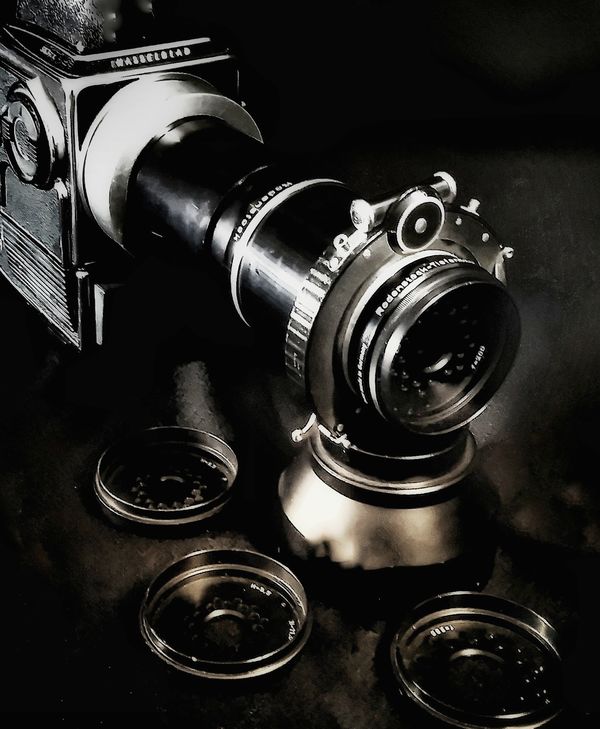
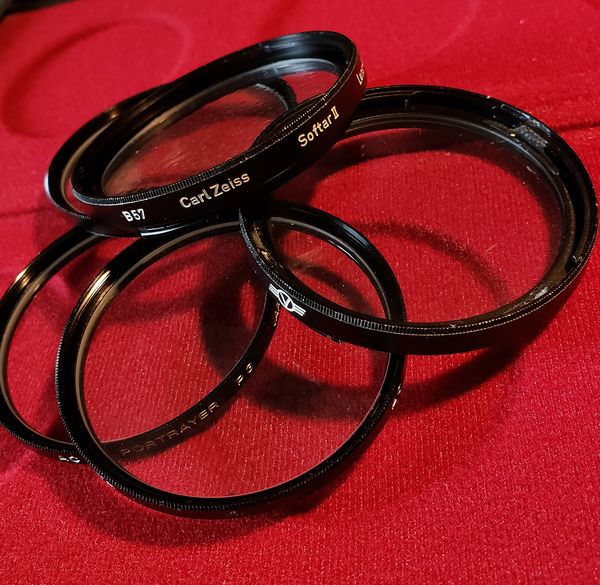
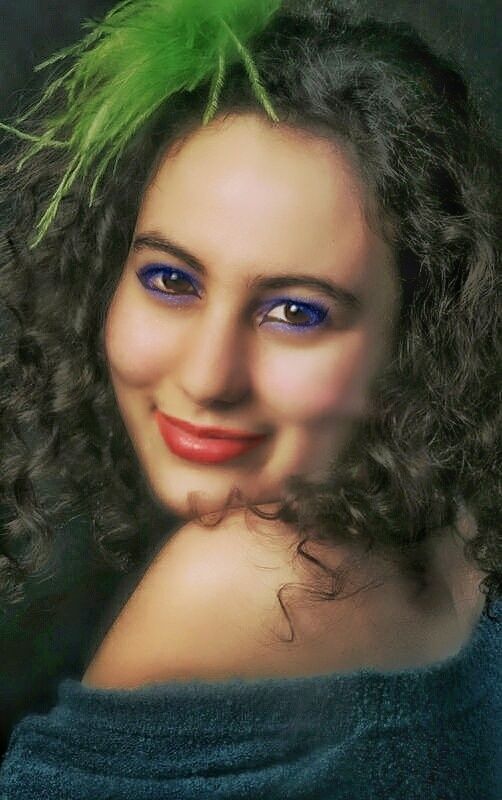
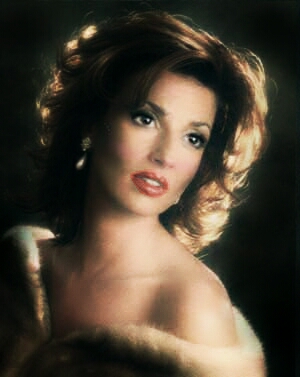
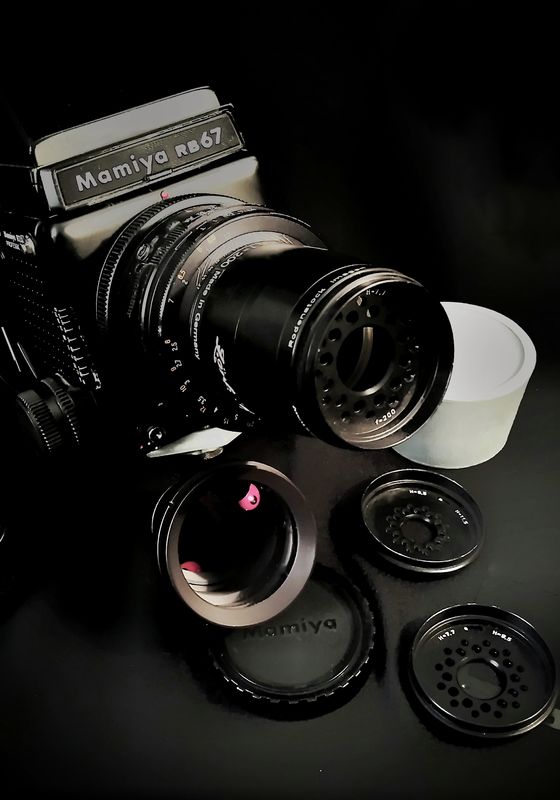
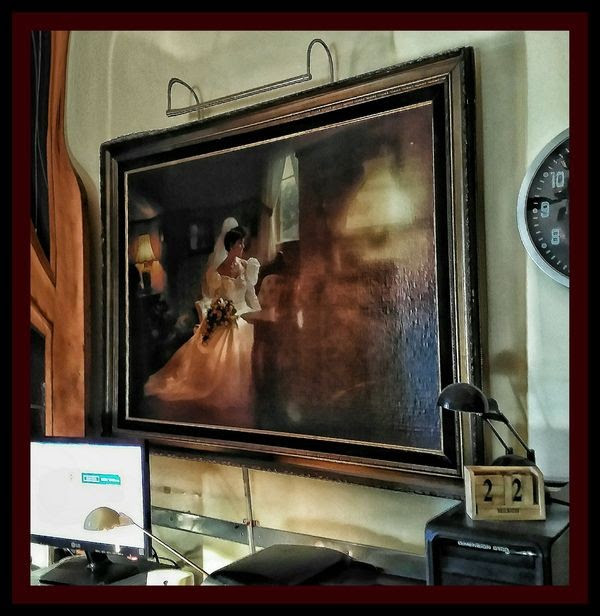
Feb 21, 2019 16:02:13 #
E.L.. Shapiro wrote:
I have been involved with soft focus portraiture f... (show quote)
Wonderful article E.D. (Ed?) I think posting this in the Portraiture section- even as is - would be a great service to us all here. It would be a pity to see this level of information get buried in the archives.
Feb 21, 2019 16:07:27 #
E.L.. Shapiro wrote:
I have been involved with soft focus portraiture f... (show quote)
Interesting, I may have to get an adapter for my Mamiya SF 145mm lens and use it on my Sony camera. Like you, I used pantyhose for years until I got the Mamiya SF lens. I have gotten away from soft focus for decades. The founding head of the photo department at Ohio University was Minor White. A well known SF photography. I got my BFA in photo there. I had almost forgotten about SF landscape and portraiture until your article. Thanks for the information. I will ad it to my teaching curriculum. Thanks
May 14, 2019 19:07:49 #
Alas, I do not use PhotoShop or LightRoom either. I use PaintShop Pro (you not have to rent it) and is has a great “softening” feature. There is a an option in Portrait Pro that will give you some great softer features as well.
May 15, 2019 08:38:52 #
An old film trick is a little vaseline on a clear filter. But not an expensive one as you may have to throw it out
Nov 30, 2019 16:23:33 #
Dec 3, 2019 10:29:08 #
flyboy61
Loc: The Great American Desert
Without getting into high tech, and doing a lot in camera, what we used in the "Old Days" was a piece of nylon mesh...pantyhose stretched over the lens, secured with a rubber band, white for neutral colors, and flesh tone for warmer rendition.
Nowadays, eBay and similar sites have used filters...for a less-used attachment, less expen$ive than new, and generally, in good to excellent condition.
My personal favorites are Tiffen Softnet, 1, 2 or 3 Black or White. The softening effect increases with the number. Start with the lowest number...that will probably do all you want. You'll not need more than one of each color. Buy one with a diameter as large as your largest lens, then use step-down rings to fit other lenses.
Nowadays, eBay and similar sites have used filters...for a less-used attachment, less expen$ive than new, and generally, in good to excellent condition.
My personal favorites are Tiffen Softnet, 1, 2 or 3 Black or White. The softening effect increases with the number. Start with the lowest number...that will probably do all you want. You'll not need more than one of each color. Buy one with a diameter as large as your largest lens, then use step-down rings to fit other lenses.
Mar 28, 2020 09:54:44 #
There are a couple of ways to do this; one is irreversible and the other not. You could place a diffusion filter in front of the lens, Cokin and others make them, but your result is going to be fixed and cannot be reversed in post. The other is to use Gaussian blur in post processing. Make a duplicate layer, since this is destructive. Convert the duplicate layer to a smart object and apply a Gaussian blur with about 10px size. Now reduce the opacity of the duplicate layer until you achieve the level of softness that you desire. Piece of cake!
Apr 1, 2020 03:01:59 #
Gene51 wrote:
Proper lighting is the first step. Using a large b... (show quote)
The nice thing about using the last approach. Is that you can soften the overall and leave the eyes sharp and clear by using a mask.
Apr 21, 2020 17:48:33 #
^x2. I use that method all the time. Sometimes I use a mask and let the eyes and lips pop through to pull some attention to them.
Apr 22, 2020 10:07:51 #
theodorephoto wrote:
The nice thing about using the last approach. Is that you can soften the overall and leave the eyes sharp and clear by using a mask.
Since it is blurred in a separate layer, rather than using a layer mask, you can always go back and use the eraser tool and remove the area around the eyes that way. Just make sure the hardness is 0
Jun 21, 2020 08:03:26 #
kenievans wrote:
Shoot it as you normally would but when you are processing the image you need to reduce the clarity. I don't know what app you are using for your processing but in both Lightroom and Photoshop, reducing the clarity gives it an overall soft focus and a little glow to the skin. That is a very quick and simple way to do it.
I enjoyed your answer, although as a Amatur DSLR Photographer, having a Nikon D3300 and 5 lens, I am still not up to date with the modern P.P. technology, I have yet to P.P. any of my Photo images, JPEGS ONLY, I have had prints made of my favorite images, although they were done at Walgreens, some 4x6, 5x7, and a few 8x10. Yes I need to learn RAW P.P., although as an older Photographer of now very close, 6 months to 70, it overwhelms me just thinking about the learning process, Lightroom, Photoshop, and others, etc. I also have fallen prey to the "Smartphone" syndrome, sharing with Friends and Family on Instagram, Text messages, Emails. So quick and easy.!!
If you want to reply, then register here. Registration is free and your account is created instantly, so you can post right away.






